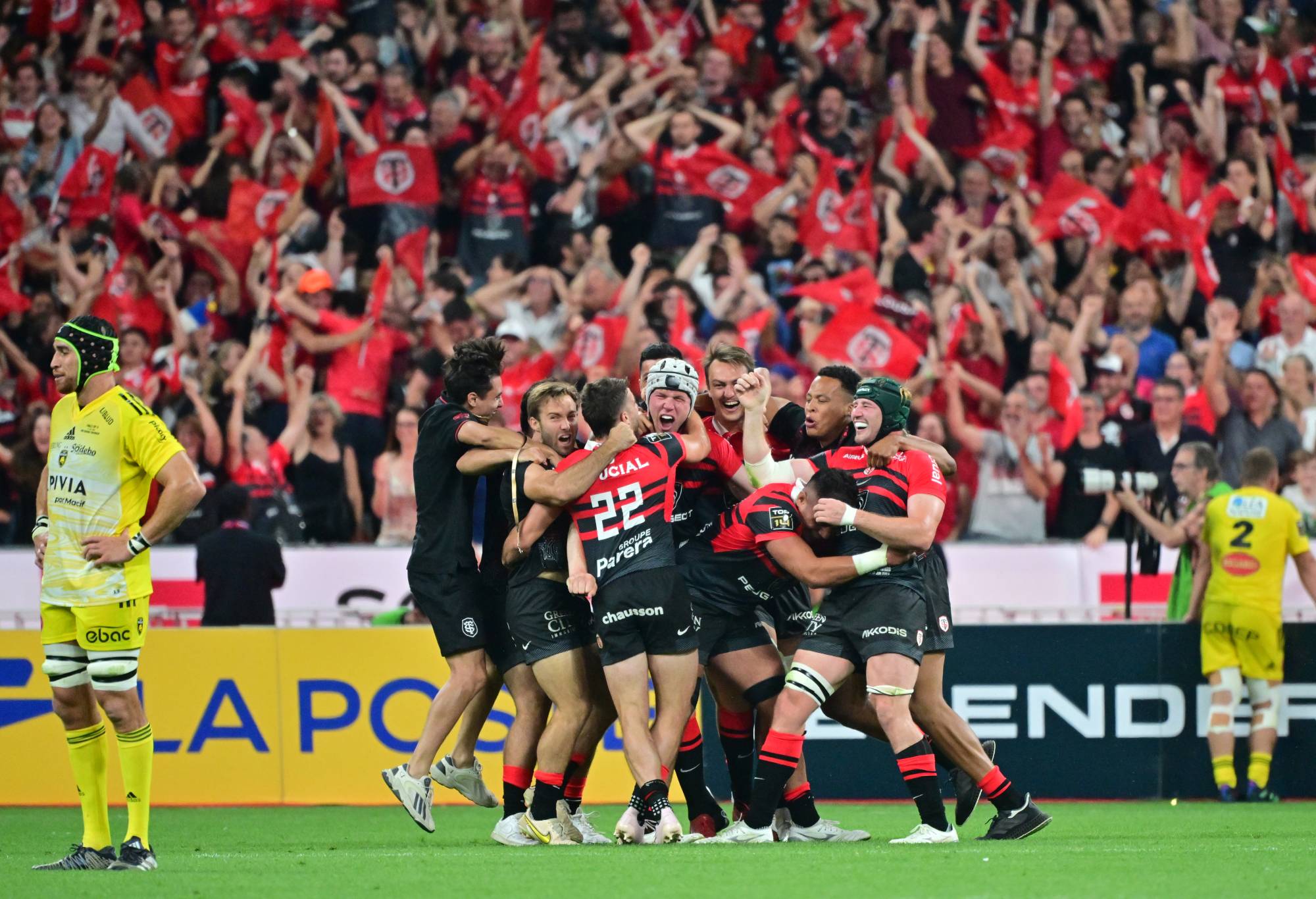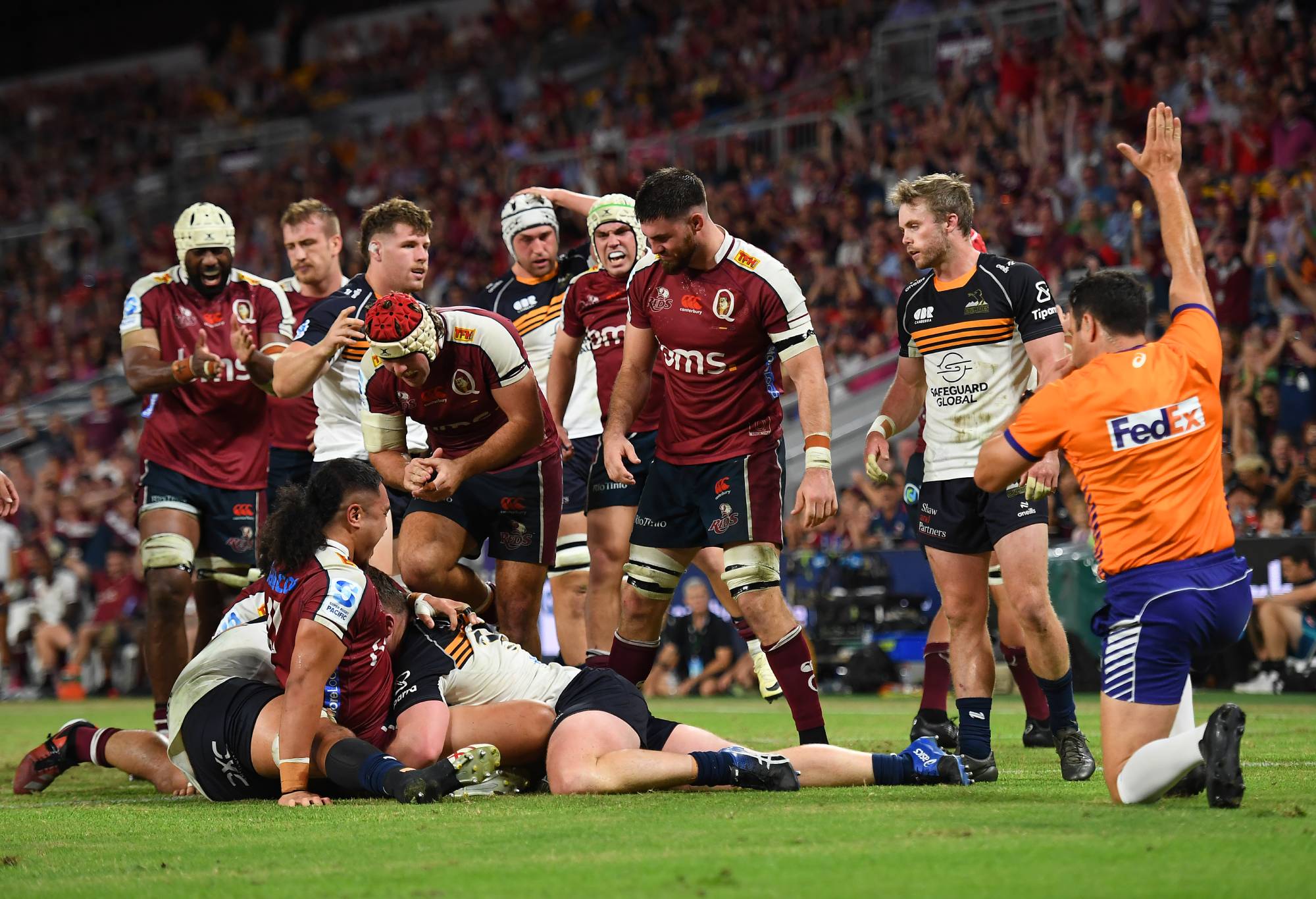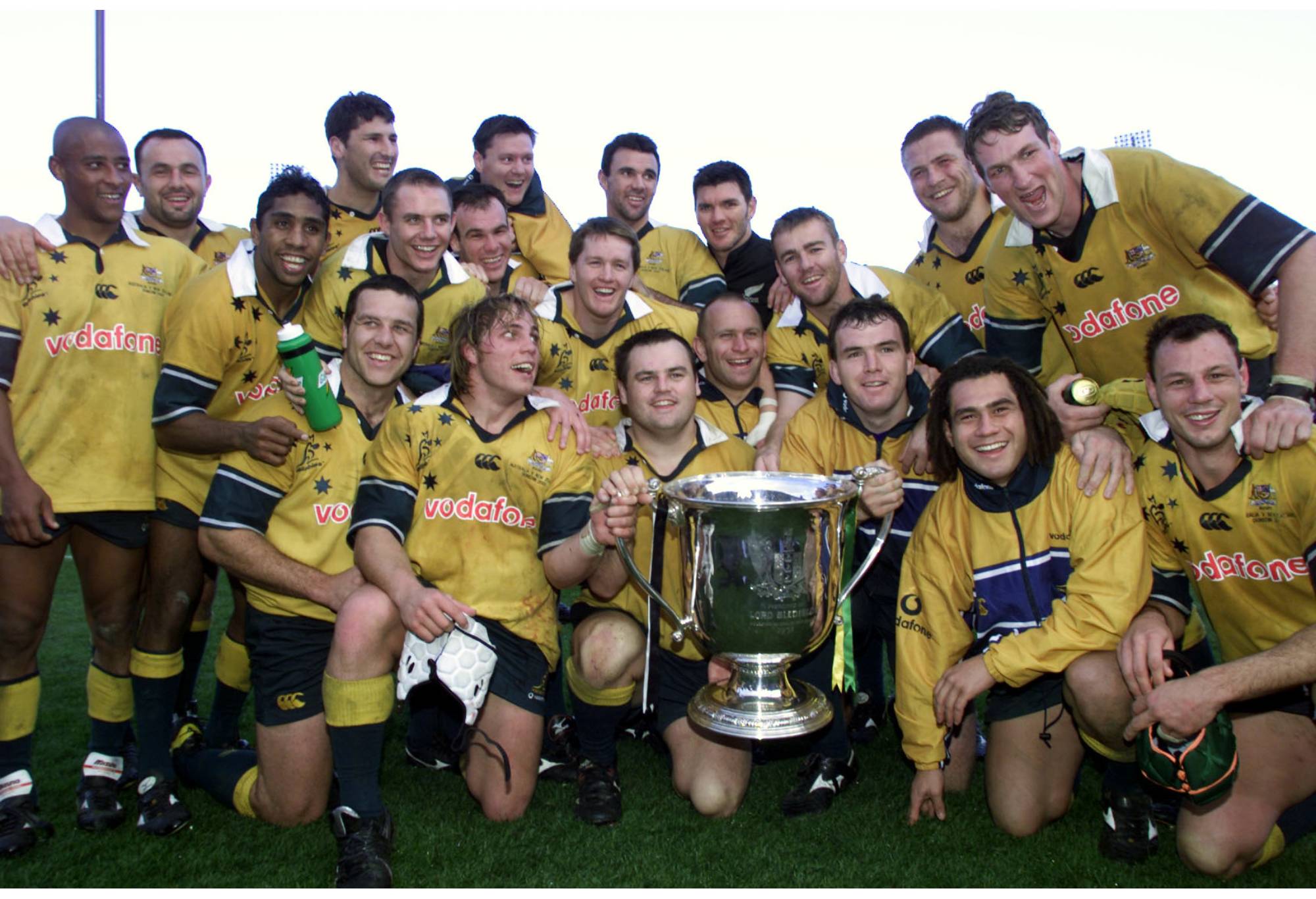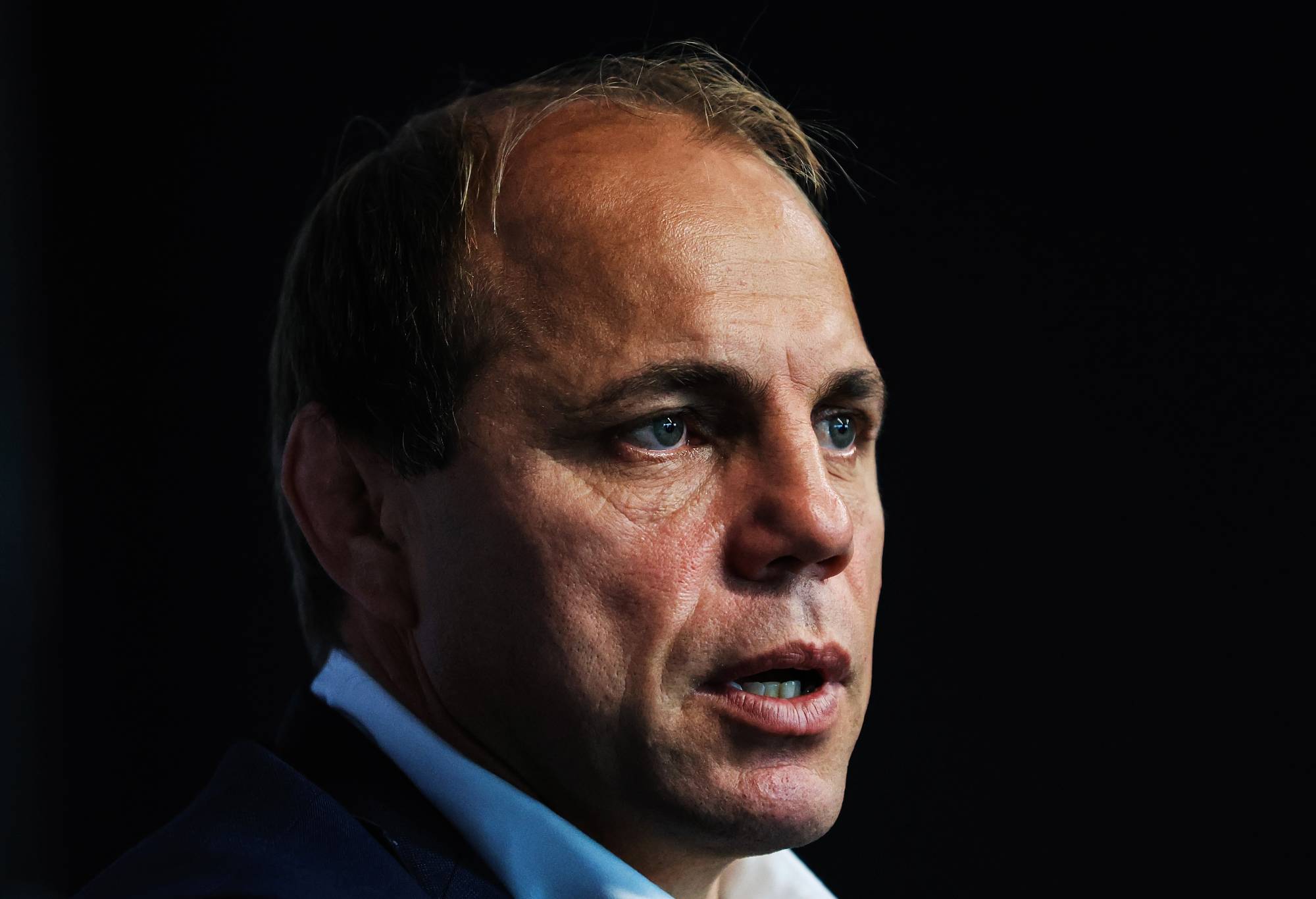No teams in the top five sports leagues of the world are folding or being saved by national unions.
Curse the money all you want.
But running deficits because wealthy owners want to have a club to front their marketing needs of their portfolio after a fox hunt on a Saturday morning is not a sustainable practice in this century.
With the NFL bringing in just short of $20 billion (US) of annual revenue followed by MLB (baseball) at $12 billion, using its long season and massive total attendance (70 million tickets sold per year) to makes up for relatively modest average crowds (29,000 per game), the NBA ($10 billion), the football Premier League ($7 billion) and the NHL (hockey) at $6 billion, there is plenty of dough for the bread to rise and rise and keep rising in a sports league.
Rather than copy other floundering rugby competitions, why not turn our eyes to those who are working?
One must go through five more football leagues (including the bloody MLS in North America), the IPL, Japanese baseball, the AFL ($1 billion annually off of 8 million fans in attendance live), second soccer divisions, Mexican football and the Vegas code NRL ($500 million) before we come to the most lucrative rugby union league in the world: le Championnat de France de rugby a XV, or the Top 14 (number 31 in the world ranks).

Toulouse celebrated defeating La Rochelle in the French Top 14 final at Stade de France on June 17, 2023. (Photo by Christian Liewig – Corbis/Corbis via Getty Images)
The fourth biggest rugby competition (by revenue) is the Pro D2 in France as well. Put together, the Top 14 ($350 million) and the D2 ($150 million) give France club rugby twice as much as the runner up nation: the Premiership of England, with a mere $250 million.
Premiership Rugby doubled its loss and halved its equity year on year in the early part of this decade, and a couple of years later, shuttered proud old clubs like London Irish and Wasps.
Could Super Rugby (Pacific or by any other name) shrink enough to lose enough money to fold? Are the Rebels a canary or the whole coal mine?
Once upon a time, in 2005, Super Rugby attendance averaged over 26,000 a game, twice or more than the Top 14, the Premiership, and the Celtic league. Now, the average is closer to 10,000; lagging those three.
One factor is the dizzying changes: Super Six, Super Ten, Super Twelve, Super 14, Super 15, Super Rugby (18 teams) and just before the retrenchment, a tripartite set up portending a big split.
The URC is the big riser as a result, taking in four of South Africa’s top clubs and the lion’s share of the Republic’s club revenue generation: Super Rugby Pacific at about $135 million a year has been leapfrogged by the URC with around $160 million in receipts.

Steven Kitshoff of Ulster attempts to palm away the Stormers’ Hacjivah Dayimani during the United Rugby Championship match at DHL Stadium in Cape Town. (Photo By Shaun Roy/Sportsfile via Getty Images)
More of concern: live attendance for the URC keeps setting record each year and almost every round whilst Super Rugby Pacific is struggling to fill stadia.
The same clashes (like a local derby with Stormers versus Bulls) which brought 15,000 or 20,000 into Loftus during Super Rugby are now, just a few years later, appealing to almost the same fan base, sold out 50,000 person events. The same is even true at Kings Park for the underperforming Sharks (sold out for Stormers’ visit). Let that sink in.
This year, big clashes of the highest quality featuring plenty of big time All Blacks fresh from a World Cup grand final or top Aussie stars in hotly contested derbies have been sparsely attended:
16,119 for Chiefs vs. Crusaders
14,593 for Reds vs. Waratahs
10,339 for Chiefs vs. Brumbies
17,782 for Reds vs. Brumbies
The gap between the quality of the games on the pitch (very high) and level of live support is jarring.
The average in Japan’s League One has risen to 11,762, built on a player pool which includes Cheslin Kolbe, Richie Mo’unga, Shannon Frizzell, Kwagga Smith, Sam Cane, Brodie Retallick, Aaron Smith, Dane Coles, Franco Mostert, Pieter-Steph du Toit, Faf de Klerk, Jesse Kriel; or a third of the players on the pitch in the biggest match in rugby in the last four years. League One officials have set a target of one million total attendance for this year.
Every weekend: a rematch of the biggest Test in a decade.
Meanwhile, Major League Rugby in North America is raising $100 million to drive growth and is on track to do it, using the 2031 World Cup as a fulcrum, and the beneficiary of two main drives: a ten year indie film production project by Goldfinch, and a steep rise in schools and colleges starting rugby as an alternative to American football (cheaper, still aggressive and collision-based, but not nearly as challenging to fund and staff). Mexico’s northern city Monterrey is set to join.
In typically American fashion, a big goal has also been set: one million kids playing rugby by 2031. If that sounds preposterous, remember there will be two World Cups (2031 men’s and 2033 women’s) in a country with almost four million women athletes at high school level and over two hundred thousand women at university level, both rising at a five per cent year on year rate.

The Queensland Reds fell just short to the ACT Brumbies on March 30, 2024, in Brisbane, Australia. (Photo by Albert Perez/Getty Images)
Australia with 26 million people is not Japan (125 million) and neither is it the U.S. (340 million) but is in the top twenty countries for gross domestic product per capita, and of those twenty, is one of only three (including Ireland and the U.S.) ranked in the top twenty for both men’s and women’s rugby. In contrast to Ireland, Australia has an abundance of fields and stadia, and compared to the U.S., an easier internal market to master, and a higher rate of people than Japan, outside of Tokyo at least, able to purchase expensive season tickets.
Is re-growing Super Rugby to new markets, for example Japan, the key? Regions welcomed to Super Rugby (Argentina and Japan) were cut with a fair amount of bad blood, making it more difficult to lure them back. The Fijian Drua are wildly, but not lucratively, supported by their fans, and Moana Pasifika is not profitable yet, having to split the Auckland sports market with too many rivals.
And yet, there is really no other path in club rugby for Australia and New Zealand than in some form of Super Rugby (Pacific or Pacific-Plus) which must grow (in interest and profit) to survive.
The Roar Rugby Podcast is on YouTube! Click here and subscribe to make sure you never miss an episode
Australia has a large sports market ($17 billion or so) with a steady uptick pace (2% per year) but is reliant on broadcast agreements and in some sectors, on gambling, as Australians’ discretionary income has risen each decade. By 2029, the market should be a $20 billion pool, with an Olympic Games around the corner in 2032.
As with most things in Australia, the revenue generation and administration are dominated by three eastern states and move quickly with trends which can emanate far away.
What part of those twenty billion bucks, how much of it, will be rugby’s?
To what extent, in five years, will over-the-top (OTT) streaming platforms supplant the traditional broadcast model?
Fighting for sporting dollars is a blood sport of its own: the latest battle in the league vs. union war infamously and decisively lost by Hamish McLennan, who charged ramparts without cannon support. Australia has over a hundred thousand rugby players, but is still behind AFL, basketball, soccer, league, cricket, and a few others we will not mention.
But perhaps more importantly than trench warfare over current dollars is the formulation of a plan to handle certain future money.

The Wallabies’ stocks have taken a dive since being the envy of the rugby world at the start of the 21st century. DIGITAL IMAGE. Mandatory Credit: Nick Wilson/ALLSPORT
In 2003, Australia hosted the World Cup, got to the grand final, sold two million tickets along the way, and made $46 million in profit. Expansion of the professional game via Super Rugby was made to Perth and Melbourne, but beyond that, much good will and momentum seems lost.
On the verge of another bonanza (Australian rugby could well reap a $50-70 million profit, depending on how well the largesse is managed), given how fast the viewership is growing (France 2023 achieved 19% more viewing hours than Japan 2019, which broke all 2015 marks) and emerging markets likely to “have emerged” by 2027, it is vital for Rugby Australia (and rugby in Australia, writ large) to come to some kind of consensus about how that money will be used.
If left to chance, or the current RA chaos, the nightmare scenario from France might follow: the 2023 World Cup in France may end up a deficit for the French Rugby Federation (FFR): at best they will reap a profit of 2 million euros and at worst, a loss of 7 million euros. About 2.5 million tickets were sold, many before the competition, but one of the key vendor-agencies for the Cup, a Swiss company, has filed for bankruptcy, costing FFR about $25 million in lost income, and the way in which the tournament was run on the ground was preposterously disorganized and inhospitable to the average hungry and thirsty consumer. With Rugby Australia’s recent record in marketing, governance, recruitment, transparency and return on investment, concern reigns.
But let us make a slightly safe assumption: Australia is better than France at running clean businesses, maximizing sales, keeping Bernard Laporte types out of the chair’s chair,
A crucial part of the issue is to decide what Super Rugby is for Australia, whether it is the right tool for the job, what worked and why, and what did not work or never will work.
Rather than just wait and watch how much New Zealand Rugby can wrest out of Sky this year to show games for a few years (which may involve a foray into the giant but fickle American market), Rugby Australia will need leaders somewhat in between Hamish’s hair-on-fire pugilism and the potential nice-guy-finishing-last mode of Phil Waugh.

Rugby Australia CEO Phil Waugh has a big rebuilding job ahead. (Photo by Mark Evans/Getty Images for Rugby Australia)
Now that a separate entity is forming out of the smoke of a signed joint venture agreement which appointed a chair and is working on finding the talent to run it all, the danger can be that rugby in Australia follows a new set of pied pipers into marketing dreams (but what is being sold?) or fan engagement (we actually do know why fans disengage) or All Black ideas of amendments in law to make All Blacks win more often or appeal to the new generation of Kiwis who are more interested in basketball or league than scrums and lineouts.
A commission can commit many things but not Rugby Australia; if Australia is to return to being one of the top four or five Test teams, get a long-term bounce from big Lions and Cup influx sufficient to pay debt down and keep pro club rugby in all its biggest cities, far more thought must be given to a deeper and more complex Australian plan.
What makes Super Rugby super for Australia?
What must change?
What dare not?

































































































